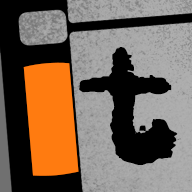Hello everyone,
In the first two shorts in my life, I just grabbed a camera and starting shooting. (had a script, camera angles, actors prepared somewhat) but had no idea how to go about managing lighting. I have a few general questions below, you may of course choose to answer just a few of them. And then, I have some shots from NCIS: LA that I'd like to ask if you can determine what kind of equipment was used to light them and how.
1) How do I define the "line" separating what needs to be fixed by lighting or by color correction / another trick in post. Meaning, I started shooting, and the image just doesn't like I want it to. How do I know whether this will be a job for lighting equipment from here or there, or a color correction trick in post...etc?
2) Can you refer me to very basic tutorials about lighting? I keep hearing terms and names of different equipment and feel pretty ignorant. lol.
3) I'm on a very tight budget specially for lighting and was wondering if there is any equipment, any basic stuff we should always have on board. Meaning, not specific lights for this shot or that shot but lighting equipment that will always be needed and are a must to have, regardless of the budget.
On to the NCIS:LA screengrabs:
Image (A) The one below is supposed to be shot when the two characters were burried underground. The "supposedly" only right source is that match lighted there. But it definitely isn't the only source, right? A lot of questions pop in my mind here. I'm telling the viewer, via the shot, that the match is the only light source. How can I light up the scene otherwise and still convince them that this light is only coming from that match?

Image (B) The one below is an outdoor shot that looks like it was shot maybe in mid day or noon. I guess they're sticking to shooting in the shadowy places to avoid overexposure, that's the term, right? lol

Image C This one has a similar question too to it. Are the lights we see indeed the only light sources? If not, is it possible to determine what's used and how it was used?

Image D The one below is indoors and again holds the same question as above. But additionally, what if they found that the light coming from that window is too much?

(Image E & F)The last and final one is outdoors, no shadows, direct noon sunlight though the shot is still very cool:
(two screen grabs, same shot just one long and one close up). How do they avoid "overexposure" in these situations?

http://s4.postimage.org/inm0lhbwb/image.png (forum would not let me post 6 images)
Input is hugely appreciated!
In the first two shorts in my life, I just grabbed a camera and starting shooting. (had a script, camera angles, actors prepared somewhat) but had no idea how to go about managing lighting. I have a few general questions below, you may of course choose to answer just a few of them. And then, I have some shots from NCIS: LA that I'd like to ask if you can determine what kind of equipment was used to light them and how.
1) How do I define the "line" separating what needs to be fixed by lighting or by color correction / another trick in post. Meaning, I started shooting, and the image just doesn't like I want it to. How do I know whether this will be a job for lighting equipment from here or there, or a color correction trick in post...etc?
2) Can you refer me to very basic tutorials about lighting? I keep hearing terms and names of different equipment and feel pretty ignorant. lol.
3) I'm on a very tight budget specially for lighting and was wondering if there is any equipment, any basic stuff we should always have on board. Meaning, not specific lights for this shot or that shot but lighting equipment that will always be needed and are a must to have, regardless of the budget.
On to the NCIS:LA screengrabs:
Image (A) The one below is supposed to be shot when the two characters were burried underground. The "supposedly" only right source is that match lighted there. But it definitely isn't the only source, right? A lot of questions pop in my mind here. I'm telling the viewer, via the shot, that the match is the only light source. How can I light up the scene otherwise and still convince them that this light is only coming from that match?

Image (B) The one below is an outdoor shot that looks like it was shot maybe in mid day or noon. I guess they're sticking to shooting in the shadowy places to avoid overexposure, that's the term, right? lol

Image C This one has a similar question too to it. Are the lights we see indeed the only light sources? If not, is it possible to determine what's used and how it was used?

Image D The one below is indoors and again holds the same question as above. But additionally, what if they found that the light coming from that window is too much?

(Image E & F)The last and final one is outdoors, no shadows, direct noon sunlight though the shot is still very cool:
(two screen grabs, same shot just one long and one close up). How do they avoid "overexposure" in these situations?

http://s4.postimage.org/inm0lhbwb/image.png (forum would not let me post 6 images)
Input is hugely appreciated!



